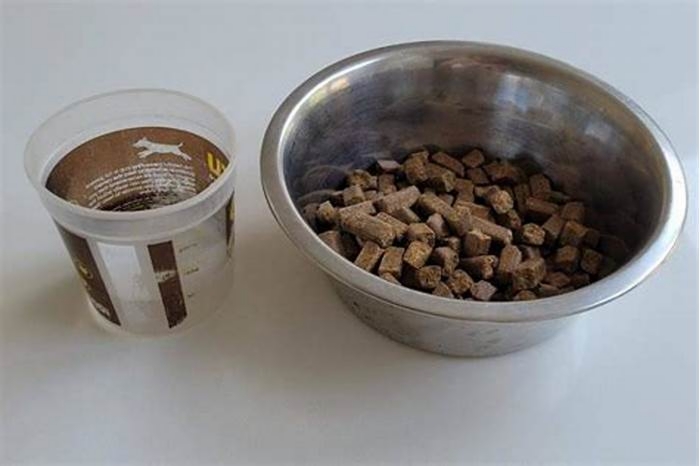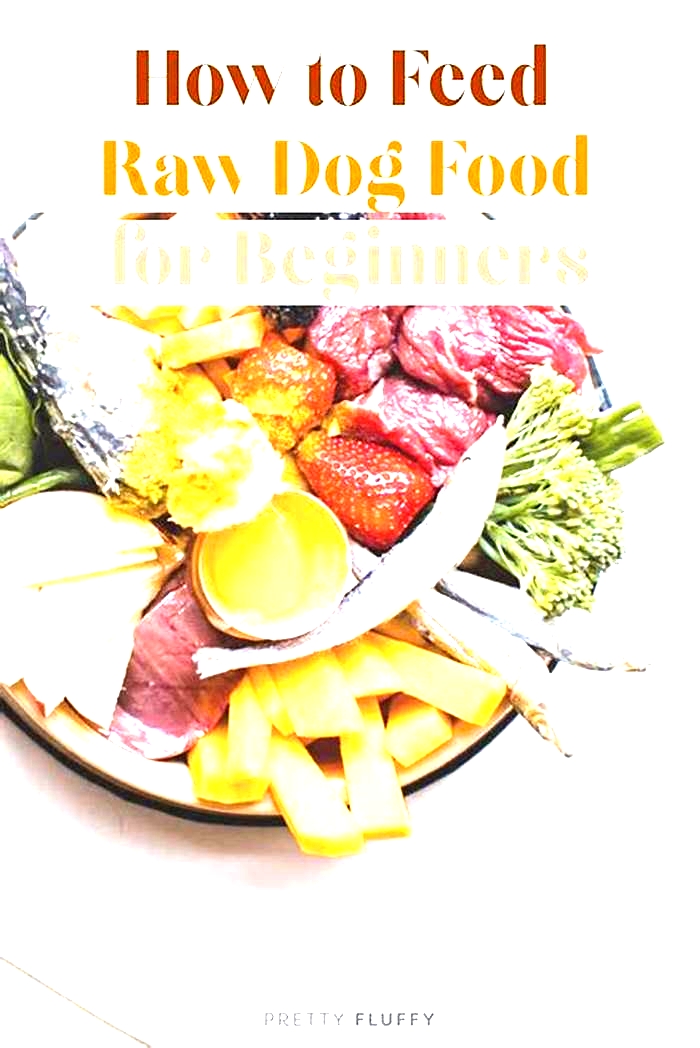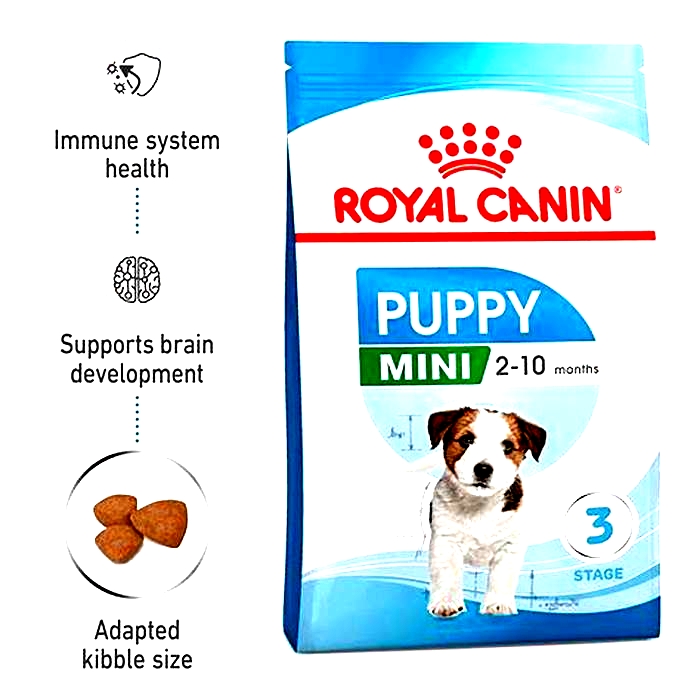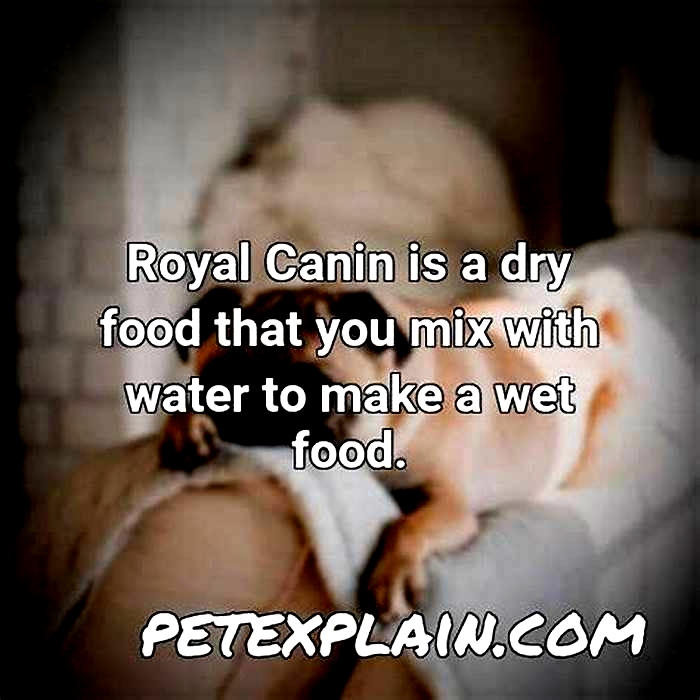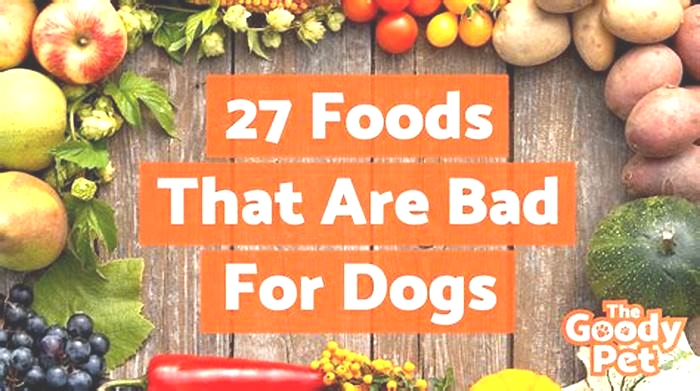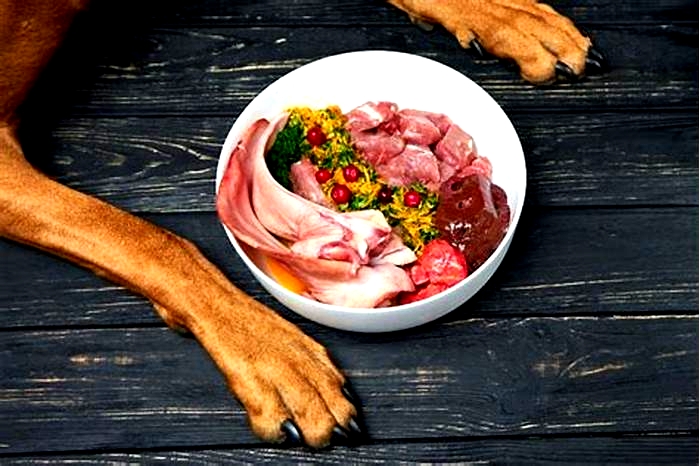Can I add water to my dogs raw food
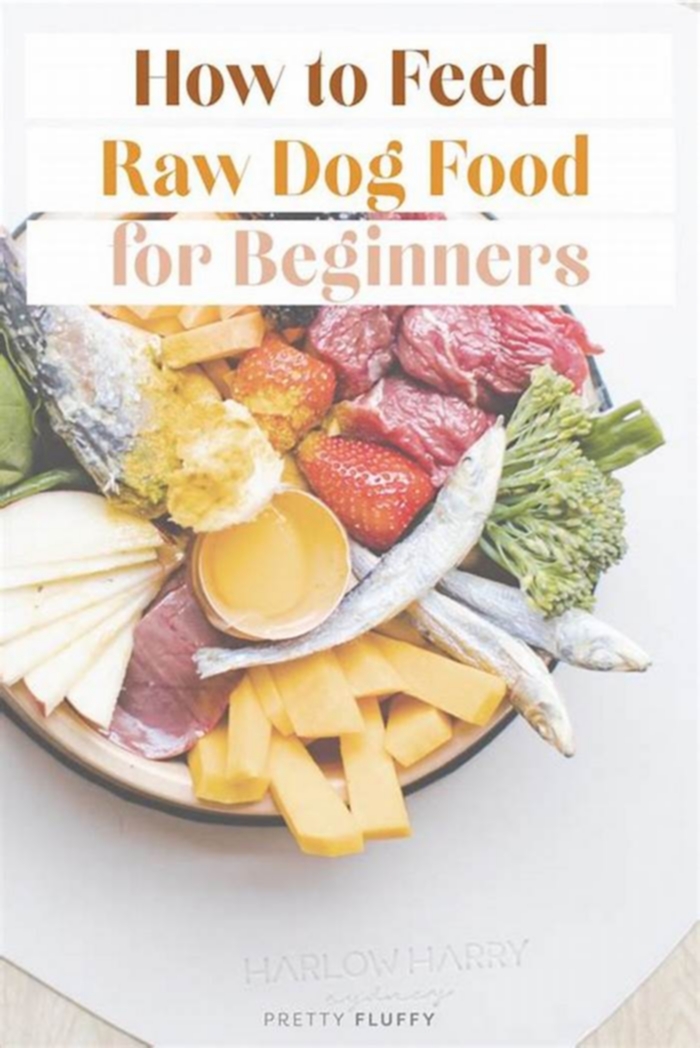
Adding Water to Freeze Dried Dog Food
Adding water to freeze-dried dog food can be beneficial for several reasons:
Improved Digestion: Rehydrated food is easier to chew and digest, especially for older dogs or those with dental issues.
Enhanced Hydration: It contributes to your dog's daily water intake, ensuring better hydration.
More Appealing to Picky Eaters: The process of rehydration enhances the food's flavors, making it more appealing to some dogs.
Better Nutrient Absorption: The added moisture can facilitate nutrient absorption in the digestive tract.
Suitable for Dogs with Specific Dietary Needs: It can be easier for dogs with certain dietary needs to consume, such as those with kidney disease who require more moisture in their diets.
However, it's important to be aware of a few potential downsides:
Less Dental Cleaning: Unlike dry food, rehydrated food does not offer the same "scrubbing" benefits for dental health.
Quick Spoilage: Once rehydrated, the food spoils quickly if not consumed promptly.
Adjustment Period Required: Some dogs might need time to adjust to the different texture and taste of rehydrated food.
Overall, whether adding water to freeze-dried dog food is "good" or "bad" largely depends on your dog's individual needs, preferences, and health. It's always best to consult with a veterinarian to determine the most suitable feeding methods for your pet.
Understanding Freeze-Dried Dog Food: An Overview
Freeze-drying is a process that's been adopted by many manufacturers in the pet food industry, yielding a product that's lightweight, nutrient-dense, and easy to store. This unique method of food preservation allows pet owners to provide their canine companions with meals that are as close as possible to a natural, raw diet, without the inconvenience or risks associated with handling and storing raw food.
What is Freeze-Dried Dog Food?
Freeze-dried dog food is a type of pet food that has undergone a special drying process known as lyophilization. During this process, the food is first frozen and then placed in a vacuum chamber. The pressure is lowered, enabling the frozen water in the material to sublimate directly from the solid phase to the gas phase. This process removes nearly all of the moisture, leaving behind a lightweight, shelf-stable product that retains nearly all of its original nutritional content and flavor.
Advantages of Freeze-Dried Dog Food
There are several compelling reasons to consider freeze-dried dog food:
Nutrient Retention: Because freeze-drying doesn't require the use of high heat, the process retains most of the food's original nutritional value, including proteins, vitamins, and minerals.
Long Shelf Life: The freeze-drying process removes about 98% of the moisture content, which significantly extends the shelf life of the food. This makes it ideal for long-term storage and for situations where refrigeration might not be available.
Lightweight and Convenient: The freeze-drying process dramatically reduces the weight of the food, making it easy to transport. This is especially useful for trips, hikes, or any situation where carrying regular wet or dry food might be inconvenient.
Freeze-Dried Dog Food Varieties
Freeze-dried dog food comes in a variety of forms. Here are a few examples:
Complete Meals: These are well-balanced, nutritionally complete meals that serve as a dog's primary diet. They're typically available in various flavor profiles, catering to the taste preferences of different dogs.
Mixers or Toppers: These are freeze-dried pieces of food intended to be mixed with a dog's regular diet to enhance the flavor or boost nutritional content.
Treats: Freeze-dried treats often consist of single ingredients like fruits, vegetables, or protein sources, offering a delicious and nutritious reward for dogs.
Whether you're a seasoned pet parent or a newcomer to the world of freeze-dried dog food, understanding this form of pet nutrition is crucial. In the following sections, we'll delve into why and how to add water to freeze-dried dog food, along with some essential tips to ensure the best results for your furry friend.
Why Add Water to Freeze-Dried Dog Food? Benefits Explained
Freeze-dried dog food offers numerous advantages, and while it can be served as is, adding water to this type of food is a common practice that comes with its own set of benefits.
Enhancing Digestibility
One of the most significant advantages of adding water to freeze-dried dog food is enhanced digestibility. By adding water, you're helping to soften the food, making it easier for your dog to chew and digest. This can be particularly beneficial for dogs with dental issues, puppies, or older dogs who might struggle with harder food textures.
Improving Hydration
While providing your pet with fresh drinking water is non-negotiable, adding water to their freeze-dried food can contribute to their daily hydration needs. This added moisture content can be particularly beneficial during hot weather or for dogs who aren't regular water drinkers.
Heightening Taste Experience
Even though freeze-dried dog food is often a hit with dogs thanks to its rich flavors, adding water can heighten this experience. When water is added to freeze-dried food, it can help to reinvigorate the flavors, creating a meal that's even more palatable to your dog.
Ensuring Nutrient Absorption
By adding water and softening freeze-dried dog food, you're also making it easier for your dog to fully absorb all the beneficial nutrients the food has to offer. Water helps facilitate the nutrient absorption process within the body, ensuring your pet is getting the maximum benefit from their meal.
Emulating a Natural Diet
Though our domesticated dogs have adapted to various diets, their ancestral diet was rich in moisture from the fresh foods they consumed. Adding water to freeze-dried food helps emulate this natural diet, which can contribute to their overall well-being.
Each of these benefits contributes to the overall health and happiness of your pet. It's essential to remember that while adding water to freeze-dried dog food can offer these benefits, it must be done correctly to ensure the most positive impact. In the upcoming sections, we'll guide you through the proper way to rehydrate freeze-dried dog food, and give you some tips to get the most out of this feeding method.
The Right Way to Rehydrate Freeze-Dried Dog Food: A Step-by-Step Guide
Rehydrating freeze-dried dog food is a simple process but following the right steps can make a significant difference in the quality of the food served to your pet. Here's a practical, step-by-step guide on how to do it correctly.
Step 1: Measure the Food
Start by measuring the appropriate amount of freeze-dried dog food based on your pet's size, age, and activity level. Every brand has its own feeding guide, so it's crucial to follow the manufacturer's instructions listed on the packaging to ensure your dog is getting the right portion.
Step 2: Add Warm Water
Next, add warm (not hot) water to the freeze-dried food. The exact amount of water will vary depending on the brand and type of food, but a general guideline is to add 1 part water to 1 part food. However, always follow the instructions given by the food manufacturer.
Step 3: Stir and Let It Soak
After adding the water, stir the mixture thoroughly to ensure that all the pieces are submerged. Let the food soak until it becomes soft. The soaking time can vary from a few minutes to half an hour, depending on the brand and size of the food pieces. Again, refer to the package instructions for specific soaking times.
Step 4: Serve at Room Temperature
Once the food has fully rehydrated, stir it again and ensure it's at room temperature before serving it to your pet. Serving the food at a temperature that's too hot or too cold could be uncomfortable or even harmful to your dog.
Step 5: Clean Up Promptly
After your dog has finished eating, promptly clean up any leftovers. Unlike dry freeze-dried food, rehydrated food can spoil quickly and should not be left out for long periods.
Remember, each dog is unique, and their preferences may differ. Some dogs might prefer their food more watery, while others may like it less so. It's all about finding the right balance for your furry friend. Over time, you'll learn to adjust the water quantity and soaking time to suit your dog's preferences and dietary needs. In the following sections, we will explore common mistakes to avoid and the correct water-to-food ratio for optimal rehydration.
Common Mistakes to Avoid When Rehydrating Freeze-Dried Dog Food
Although rehydrating freeze-dried dog food isn't overly complex, there are common pitfalls pet parents should avoid to ensure their dogs get the most out of their meals. Here are some crucial missteps to steer clear of:
Overlooking the Instructions
Each brand of freeze-dried dog food will have its own specific instructions on how to best rehydrate the product. Ignoring these guidelines can lead to a meal that's too watery or too dry, and it could potentially affect your dog's enjoyment and the nutritional impact of the food.
Using Water That's Too Hot
While it might be tempting to speed up the rehydration process with hot water, this isn't recommended. Using water that's too hot can potentially degrade some of the nutrients in the freeze-dried food, reducing its nutritional value. Warm water is the way to go, helping to keep the food's nutrient profile intact.
Inadequate Soaking Time
Giving the food sufficient time to soak is critical. Inadequate soaking might result in food that's still partially dried and harder to digest. On the other hand, soaking it for too long could make the food overly mushy. Following the manufacturer's guidelines for soaking times will help you hit that sweet spot.
Leaving Rehydrated Food Out For Too Long
Once rehydrated, freeze-dried dog food should be consumed promptly. Leaving it out for extended periods can lead to spoilage. If your dog hasn't finished their meal within an hour or so, it's best to discard any leftovers.
Not Adjusting for Dietary Needs
Just as humans do, dogs have different dietary needs depending on their size, age, and activity levels. Make sure you're adjusting the amount of rehydrated freeze-dried food based on these factors. Overfeeding or underfeeding can lead to health problems in the long run.
Avoiding these common mistakes when rehydrating freeze-dried dog food can contribute significantly to your pet's overall health and enjoyment of their meals. In the next section, we'll guide you on determining the correct water-to-food ratio to ensure an optimal feeding experience.
Determining the Correct Water-to-Food Ratio: Tips and Guidelines
One of the most important aspects of rehydrating freeze-dried dog food is determining the correct water-to-food ratio. Although the specific ratio may vary depending on the manufacturer's instructions, there are some general guidelines you can follow.
Follow the Manufacturer's Guidelines
Most freeze-dried dog food manufacturers provide recommended ratios of water to food on their packaging. These guidelines are typically based on extensive testing and take into consideration factors like the size of the food pieces, their absorption rate, and the optimal texture for enjoyment and digestibility.
Start with a 1:1 Ratio
If the packaging doesn't provide a specific ratio or if you're in doubt, a good place to start is with a 1:1 ratio. This means that for every cup of freeze-dried dog food, you would add one cup of warm water. Observe how the food rehydrates at this ratio and adjust as necessary. Some foods might need a little more water to fully rehydrate, while others might need a bit less.
Adjust Based on Your Dog's Preference
Just like humans, dogs have preferences when it comes to the texture of their food. Some might prefer their food a little on the soupy side, while others might like it just moist enough to be soft. Pay attention to your dog's eating habits and adjust the water-to-food ratio accordingly.
Consider Your Dog's Hydration Needs
If your dog is reluctant to drink enough water or if you're experiencing particularly hot weather, you might consider increasing the amount of water you add to their freeze-dried food. This can help increase their overall water intake and keep them well-hydrated.
Remember, determining the right water-to-food ratio is more of an art than a science. It's about finding the perfect balance that suits your dog's individual needs and preferences. This might require some experimentation, but with careful observation and a bit of patience, you'll find the perfect ratio that your dog loves. In the following sections, we'll delve deeper into how rehydrated freeze-dried food can impact your dog's health and digestion.
Impact of Rehydrated Freeze-Dried Food on Canine Health and Digestion
Feeding your dog rehydrated freeze-dried food can have substantial effects on their health and digestion. Understanding these effects can help you make informed decisions about your pet's diet and overall care.
Improved Digestion and Nutrient Absorption
Rehydrating freeze-dried dog food before feeding it to your pet softens the food, making it easier for your pet to chew and digest. Furthermore, the added moisture can facilitate nutrient absorption in the digestive tract, ensuring your pet is reaping all the benefits from their meal.
Better Hydration
As mentioned earlier, rehydrated freeze-dried dog food contributes to your pet's daily water intake. This can be particularly beneficial for dogs who tend to drink less water or during hotter weather when hydration becomes even more critical. Proper hydration is crucial for various bodily functions, including digestion and temperature regulation.
Dental Health Considerations
Although rehydrated freeze-dried food is softer and easier for dogs to eat, it's important to note that it may not provide the same dental benefits as dry kibble. The act of chewing dry, crunchy food can help scrape plaque off your dog's teeth, promoting better dental health. Therefore, while rehydrated freeze-dried food has many benefits, it may be beneficial to include dental chews or other dental care practices in your dog's routine.
Satisfying Picky Eaters
Rehydrated freeze-dried food can be a game-changer for picky eaters. The process of rehydration enhances the food's flavors, often making it more appealing to dogs. If your pet tends to be fussy about their food, serving them rehydrated freeze-dried food might just be the solution you're looking for.
Healthier Skin and Coat
The nutrients preserved in freeze-dried dog food, coupled with the additional hydration, can contribute to a healthier skin and coat. Essential fatty acids, vitamins, and minerals in the food, when fully absorbed, often result in a shinier coat and healthier skin.
Rehydrated freeze-dried food can offer numerous health benefits to your pet. However, like any diet change, it's essential to monitor your dog and consult with your vet to ensure it's the best option for your pet's individual health needs. As we move into our last section, we'll give you some useful tips and tricks to make the transition to rehydrated freeze-dried food smooth for you and your pet.
Transitioning Your Dog to Rehydrated Freeze-Dried Food: Tips and Tricks
Switching your dog's diet should always be a gradual process, and transitioning to rehydrated freeze-dried food is no exception. Here are some helpful tips and tricks to make this change as smooth as possible for your furry friend.
Gradual Introduction
Start by mixing a small amount of rehydrated freeze-dried food into your dog's regular food, gradually increasing the amount over a week or two. This slow introduction will help your dog's digestive system adjust to the new food and reduce the chances of any gastrointestinal upset.
Observe Your Dog's Response
Pay close attention to how your dog responds to the new food. Look for signs of enjoyment, such as eager eating or seeking out the freeze-dried portions. However, also keep an eye out for any signs of digestive discomfort like bloating, gas, or changes in stool consistency. If any concerns arise, consult with your vet immediately.
Experiment with Water Amounts
As discussed earlier, the correct water-to-food ratio can differ based on the dog's preference. Start with the manufacturer's guidelines, but feel free to experiment until you find the consistency that your dog enjoys the most. Remember to always use warm water, not hot or cold.
Maintain Regular Feeding Times
Transitioning to a new type of food can be a big change for your dog. To keep some consistency, maintain your regular feeding times during this transition. This consistency can help ease any anxiety your pet might feel about the new food.
Be Patient
Every dog is different, and some might take to rehydrated freeze-dried food immediately, while others might need a bit more time to adjust. Patience is key. Allow your dog to take their time to explore and get used to the new food.
Switching to rehydrated freeze-dried food can be a wonderful way to enhance your dog's diet, offering a myriad of benefits from improved digestion to enhanced taste. With the right approach and plenty of patience, this transition can be a smooth and enjoyable experience for both you and your pet.

